The Historic Lincoln Oak: Where American Political History Took Root
Lincoln oak refers to several historically significant oak trees connected to Abraham Lincoln, most notably the famous tree in Bloomington, Illinois where both Lincoln and Stephen A. Douglas delivered speeches during the 1850s. Here's what you need to know:
Key Lincoln Oak Facts:
- Original Location: Bloomington, Illinois (Dimmett's Grove)
- Historical Period: 1855-1860 speeches by Lincoln and Douglas
- Current Status: Original tree died in 1976, replaced in 1980
- Memorial: 32×32-foot park with commemorative plaque
- Related Tree: Boundary Oak at Lincoln's birthplace in Kentucky
The Lincoln oak stands as more than just a tree - it represents a living witness to pivotal moments in American political history. Between 1855 and 1860, this mighty oak provided shade for political rallies where Abraham Lincoln and Stephen A. Douglas debated the issues that would soon divide a nation. As Adlai Stevenson I once noted about the spot: "This is hallowed ground because Lincoln spoke here."
While the original tree succumbed to age in 1976, its legacy lives on through memorials, replacement plantings, and commercial products like flooring and bourbon that bear the Lincoln oak name. The term has also become associated with the Boundary Oak - another historically significant tree that stood near Lincoln's birthplace in Kentucky for nearly 200 years.
I'm Mortuary Cooler, a national-level mortuary cooler supplier with experience in American craftsmanship and heritage preservation. Through my work with funeral homes across the country, I've seen how historical elements like lincoln oak inspire everything from memorial products to facility design choices.
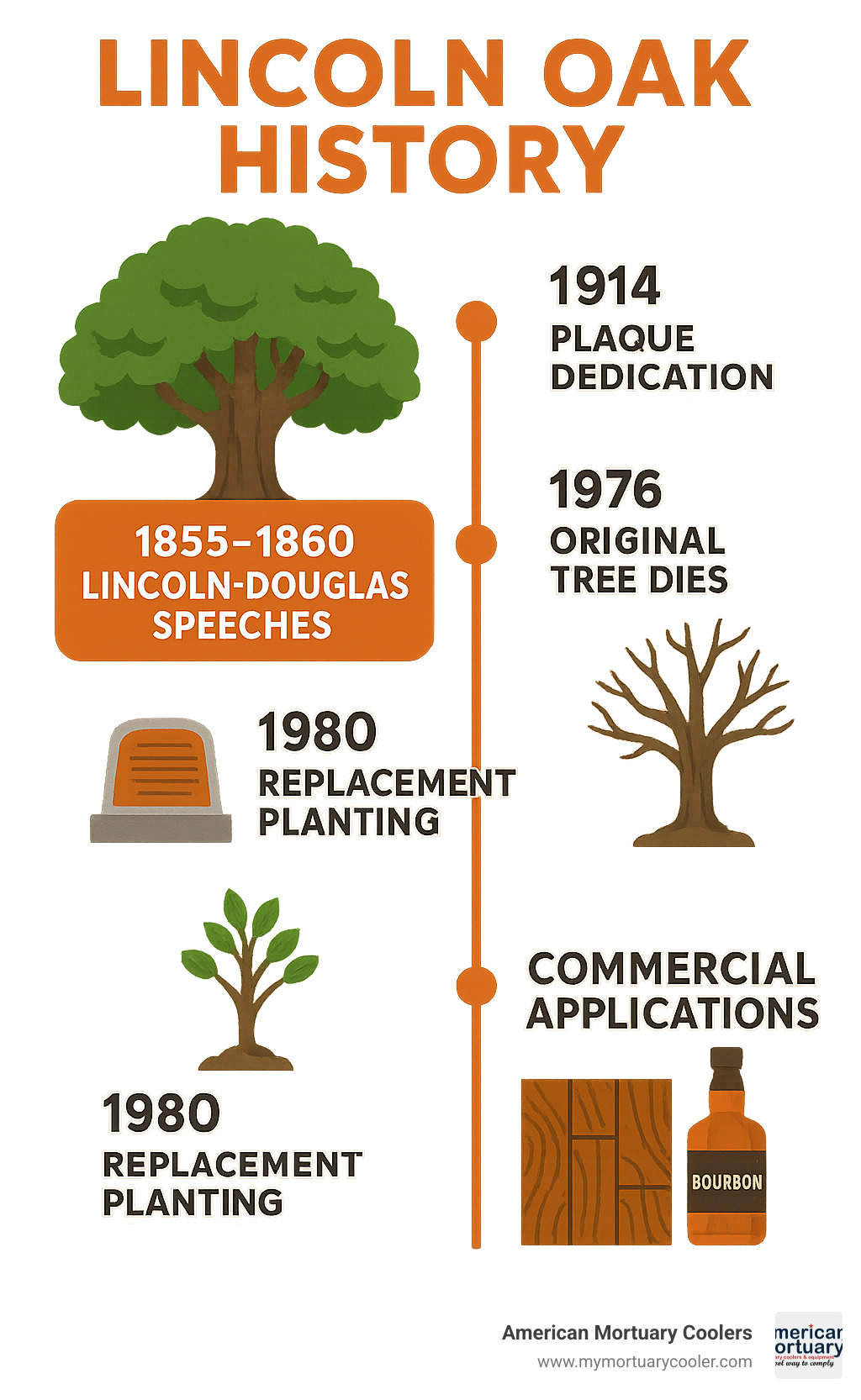
Lincoln oak terms to learn:
The Legacy of Lincoln Oak
Picture this: a magnificent oak tree standing tall in what locals called Dimmett's Grove, right here in Bloomington, Illinois. This wasn't just any backyard tree - the Lincoln oak grew near the grand Vrooman Mansion, creating a perfect natural setting for the kind of political gatherings that would shape America's future.
From 1855 to 1860, this oak became something special. Its sprawling branches provided shade for crowds who came to hear the most important political voices of their time. The tree's exact location at 40°28′32″N 88°59′6″W might sound like just coordinates today, but back then, it was the place to be if you wanted to understand where America was heading.
The tree got its official recognition in 1914 when poet Vachel Lindsay dedicated a commemorative plaque right there on the spot. By 1966, the city of Bloomington made sure this piece of history would stick around - they formally accepted a 32×32-foot parcel of land containing the oak to keep it protected for future generations.
Why Was the Lincoln Oak Historic?
The Lincoln oak earned its place in history books because it witnessed democracy in action during one of America's most challenging times. This tree didn't just provide shade - it provided a stage where the future of our nation was debated.
Here was a natural gathering place where Abraham Lincoln and Stephen Douglas could speak directly to regular folks about the issues that kept everyone up at night. We're talking about slavery, states' rights, and all the other tough questions that would eventually lead to the Civil War.
These weren't the famous Lincoln-Douglas debates you might remember from history class, but they were just as important. As Adlai Stevenson I put it so perfectly, this spot became "hallowed ground because Lincoln spoke here." That quote now lives on the memorial plaque, reminding visitors why this particular oak tree means so much more than its wood and leaves.
"Speeches Under the Lincoln Oak"
Under the lincoln oak's generous canopy, both Lincoln and Douglas found the perfect spot to connect with local citizens about the campaign issues that would define America's path forward. Between 1855 and 1860, these weren't formal debate settings - they were more like community conversations where real people could hear directly from the politicians who wanted their votes.
The slavery debate dominated many of these gatherings, but speakers also tackled other pressing concerns of the day. Dimmett's Grove offered the ideal location - easy for townspeople to reach, yet spacious enough for the growing crowds who came to hear these rising political stars share their visions for America's future.
Notable Figures & Pivotal Moments Under the Branches
The lincoln oak became a magnet for some of the most influential voices in 19th-century American politics. Abraham Lincoln, already building his reputation as a compelling speaker with unwavering principles, found that this stately oak provided the perfect setting to connect with Illinois voters on a personal level.
Stephen A. Douglas, who would later become Lincoln's famous rival in both the Senate race and presidential campaign, also recognized the tree's unique appeal as a speaking platform. There was something special about gathering under those ancient branches - it felt more intimate than a formal hall, yet grand enough for the weighty topics they discussed.
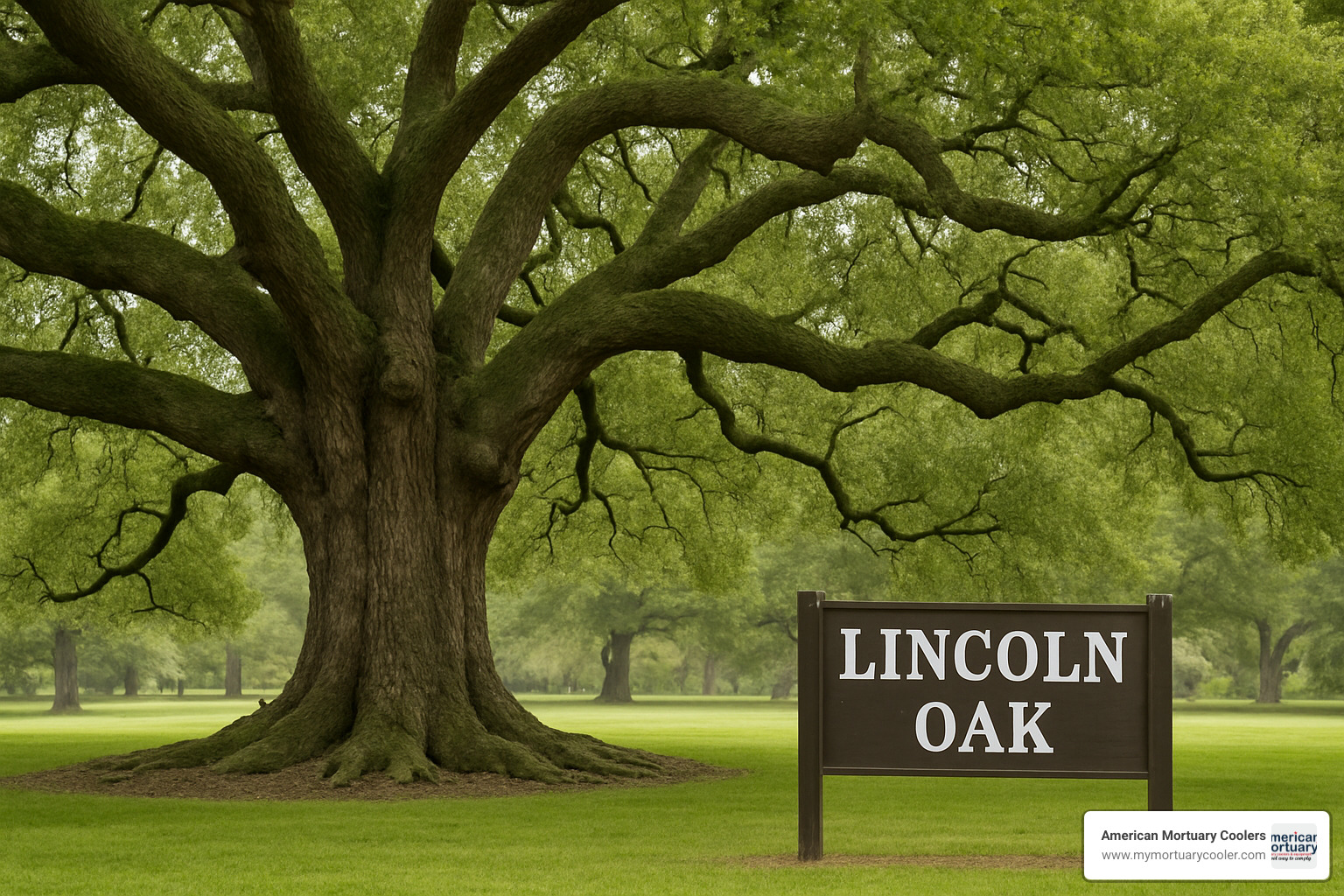
The tree's legacy was officially honored in 1914 when poet Vachel Lindsay organized a moving dedication ceremony for the commemorative plaque. This brought together community leaders who understood they were preserving something precious for future generations.
The ceremony had the backing of prominent local figures like Matthew T. Scott and Carl Vrooman, whose nearby estate included the impressive mansion that gave the oak's location such prestige. These were civic-minded citizens who recognized the tree's role in shaping American democracy.
Other Trees in Lincoln Lore: The Boundary Oak
While the Bloomington lincoln oak earned its fame through political speeches, another remarkable tree played a different but equally important role in Lincoln's story. The Boundary Oak stood proudly on Sinking Spring Farm in Hodgenville, Kentucky - the very place where Abraham Lincoln drew his first breath.
This wasn't just any landmark tree. The Boundary Oak served as an official boundary marker in the legal surveying system of the time. When Thomas Lincoln bought the 300-acre farm in December 1808, this oak was already a sturdy 25-30 year old tree marking property lines with legal precision.
By the time this magnificent white oak reached the end of its life, it had grown to nearly 6 feet in diameter with an impressive 115-foot crown spread. Standing less than 150 yards from Lincoln's birth cabin, it remained the last living witness to the future president's earliest days on earth.
The Boundary Oak NPS factsheet provides detailed information about this remarkable tree and its significance to Lincoln's heritage.
"Legacy Echoes: Boundary Oak vs. Lincoln Oak"
Both the lincoln oak in Illinois and the Boundary Oak in Kentucky tell different chapters of Lincoln's story, each with its own profound meaning. The Illinois oak represents Lincoln's rise to political prominence and his role in democratic discourse, while the Kentucky oak symbolizes his humble beginnings and deep connection to American soil.
Both trees faced similar preservation challenges over the decades. The Boundary Oak received attention from conservationists as early as the 1920s, while the Illinois lincoln oak had its own dedicated supporters working to protect it. Unfortunately, both trees eventually succumbed to the natural cycle of life.
The Illinois oak died in 1976 and was replaced four years later, while the Boundary Oak was cut down in 1986 after living nearly 200 years. Their deaths marked the end of living history, but sparked new forms of commemoration that keep their stories alive today.
What Became of the Original Tree? Memorials, Replacements & Living Tributes
The original Lincoln oak stood as a silent witness to American history for well over a century. After sheltering those famous political speeches in the 1850s, it continued growing through the Civil War, Reconstruction, and into the modern era. But even the mightiest oaks can't live forever, and this historic tree finally died in 1976.
The people of Bloomington weren't about to let this piece of history disappear without a trace. Just four years later, in 1980, they planted a replacement oak in the same sacred spot. It was their way of saying that while the original tree was gone, its spirit would live on for future generations to find and appreciate.
The 1914 commemorative plaque that had honored the site for decades was carefully relocated to the county historical society for safekeeping. Meanwhile, the 1966 land deed that had protected the 32×32-foot park remained in effect, ensuring the memorial site would stay preserved.
One of the most touching tributes came from an unexpected place. A single leaf from the original tree found its way into the Milburn Lincoln Wilson Abraham Lincoln Collection at Montana State University. It might seem like a small thing, but that preserved leaf represents a real, physical connection to the actual branches that once shaded Lincoln and Douglas during their historic speeches.
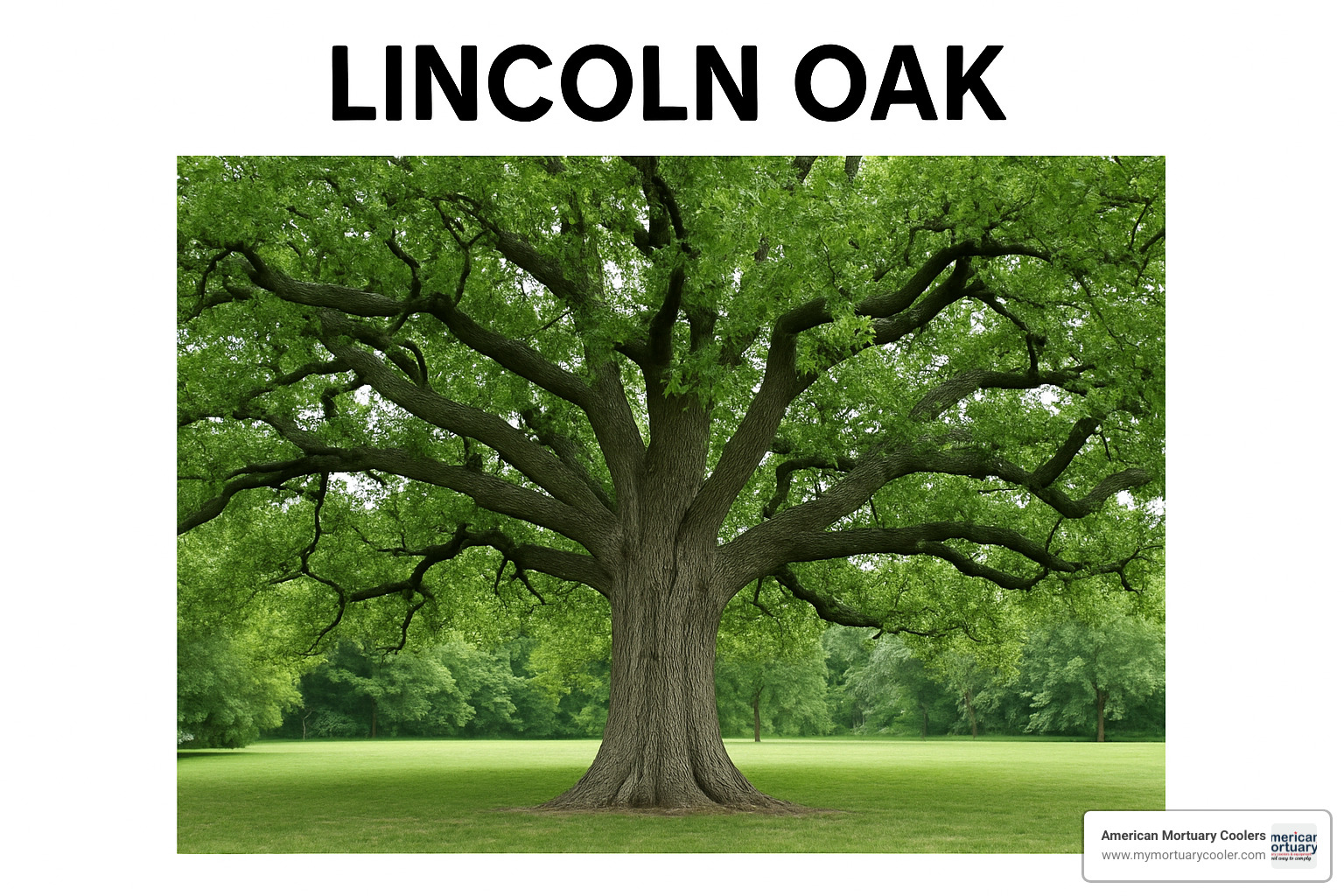
Modern Memorials & Products
The Lincoln oak name has found new life in some pretty interesting places. The bourbon industry, always drawn to stories with American roots, has acceptd the connection between Lincoln and historic oak trees. The Boundary Oak Distillery created special releases that honor the tree near Lincoln's birthplace, and you can learn more about these commemorative spirits at their Lincoln Bourbon release page.
The flooring industry has also adopted Lincoln Oak as a product name that represents both quality and historical significance. These hardwood products typically feature plank widths from 3¼" to 7½", thickness options ranging from ½" to ¾", and come with lifetime residential warranties plus up to 15 years of commercial coverage.
What's fascinating is how these memorial connections extend into unexpected areas. In my work at American Mortuary Coolers, I've noticed how natural materials like oak inspire families when they're choosing memorial furnishings. There's something deeply meaningful about connecting with these enduring natural elements during times of remembrance. If you're interested in exploring natural memorial options, you might find value in our comprehensive guide: More info about wood urn options.
"Commemorative Saplings & Seeds Named Lincoln Oak"
The lincoln oak legacy continues growing through nursery stock and community plantings that carry on the name and spirit of the original. Schools and civic organizations have found that planting commemorative saplings creates powerful educational opportunities while contributing to their local urban forestry efforts.
These heritage tree programs recognize something important: we can't keep the original trees alive forever, but we can maintain their symbolic presence through thoughtful new plantings. Each Lincoln Oak sapling planted today becomes part of an ongoing story that connects communities to their shared American heritage.
Botanical Profile & Commercial Uses of Lincoln Oak
The original Lincoln oak in Bloomington may have been lost to time, but its legacy lives on through the oak species that inspire modern products bearing its name. While we can't know exactly what type of oak sheltered Lincoln's speeches, most commercial "Lincoln Oak" products draw from traditional American oak varieties like Quercus velutina (black oak).
These native oaks share the sturdy characteristics that would have made the original tree such an enduring landmark. Black oak typically reaches 40-60 feet in height with a 40-50 foot spread - perfect for providing shade to political gatherings. The trees are known for their beautiful red-maroon fall color and excellent heat and drought tolerance, traits that helped them survive the harsh Midwest seasons.
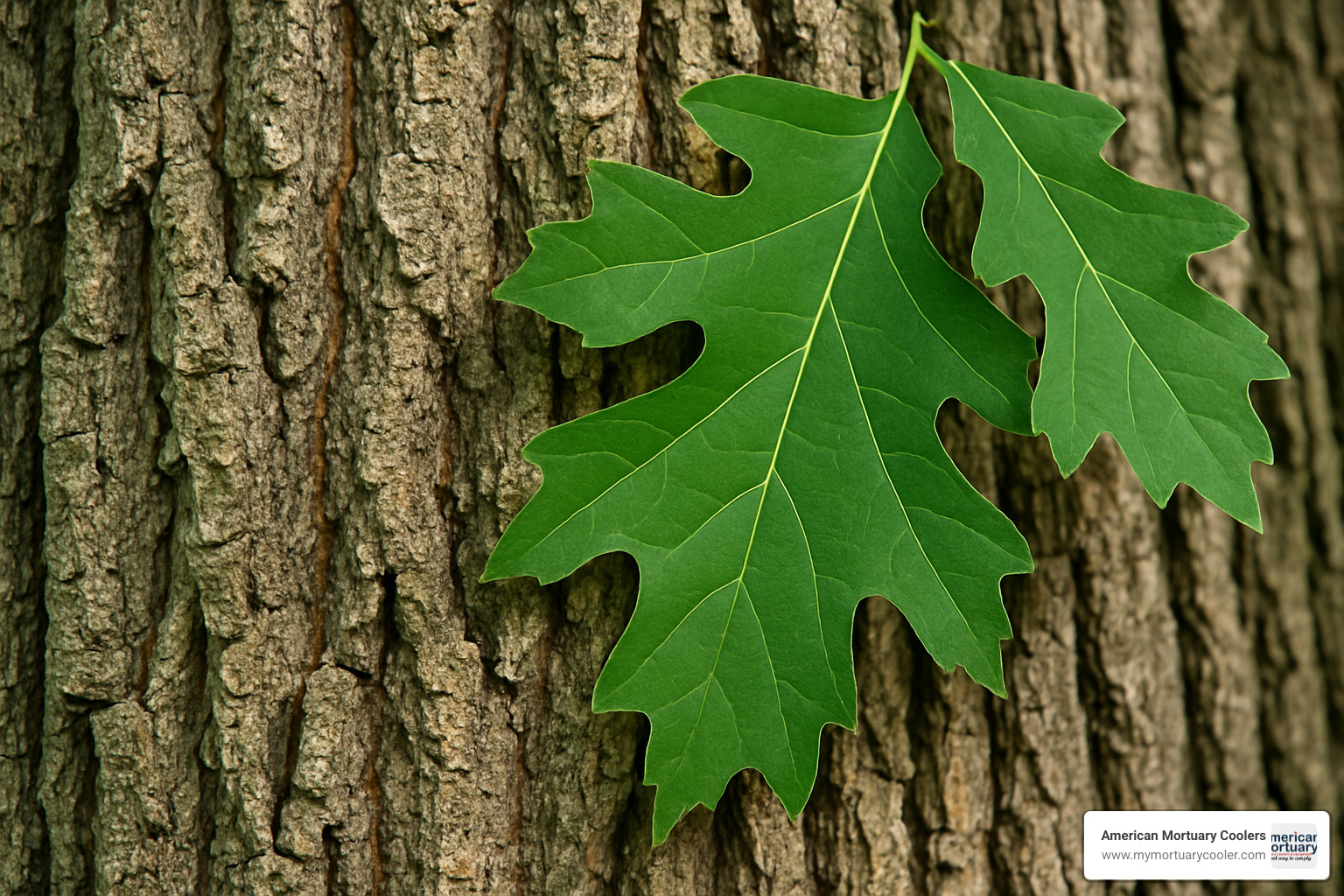
What makes oak wood particularly valuable for commercial use is its Janka hardness rating of around 1360. This moderate durability rating means it's tough enough for heavy use but still workable for fine craftsmanship - qualities we appreciate in our work creating custom mortuary equipment that needs to last for decades.
Species Characteristics in Everyday Products
Lincoln oak flooring has become incredibly popular because it combines historical significance with practical beauty. Modern manufacturing brings out the best in these traditional hardwoods through careful processing and finishing.
The engineered options offer impressive versatility. You'll find plank dimensions ranging from 7″×5/8″ up to 10″×3/4″, giving homeowners and businesses plenty of design flexibility. These floors feature a multi-layer construction with a genuine hardwood wear layer on top, so you get the authentic wood look with added stability.
What really sets quality lincoln oak flooring apart is the finishing work. Most premium products use BONA Performance Multilayer UV Ultra Matte Urethane finishes that protect the wood while maintaining its natural appearance. The floors are FloorScore-Certified for indoor air quality and work beautifully with radiant heating systems.
For those who prefer traditional solid hardwood, ¾-inch thick planks with wire brushing and distressed finishes create that authentic, aged look. The micro-beveled edges help create seamless installations that highlight the wood's natural grain patterns.
The warranty coverage speaks to the quality - lifetime residential warranties with 3-year commercial coverage show manufacturers stand behind their Lincoln Oak products.
"Commercial Products Branded as Lincoln Oak"
The lincoln oak name has grown far beyond flooring into a symbol of American craftsmanship and heritage. This resonates strongly in our industry, where families seek meaningful ways to honor their loved ones.
In the spirits world, Lincoln Oak bourbon celebrates the connection to the Boundary Oak at Lincoln's birthplace. These straight bourbon whiskeys typically run 105-120 proof and age for 2-4 years. Tasters often note sweet corn, honeyed grains, cinnamon, and nutmeg - flavors that reflect the oak's influence on the aging process.
The luxury vinyl market has acceptd Lincoln Oak styling too. 7″×48″ planks with realistic wood appearance offer the look of hardwood with easier maintenance. With 15-year commercial warranties and pricing around $4.54 per square foot, these products make the Lincoln Oak aesthetic accessible to more budgets.
Lessons, Values, and Ongoing Commemoration
The lincoln oak story isn't just about one tree or even two trees - it's about how we choose to remember the moments that shaped our nation. These heritage trees, whether standing in Illinois political gatherings or marking property lines in Kentucky, show us that history lives in the everyday places where real people made real decisions.
When you think about it, there's something beautiful about how a simple oak tree became a witness to democracy in action. The shade it provided wasn't just relief from the sun - it was shelter for the kind of honest conversations that built America. That's a lesson worth preserving, even when the original tree can't be saved.
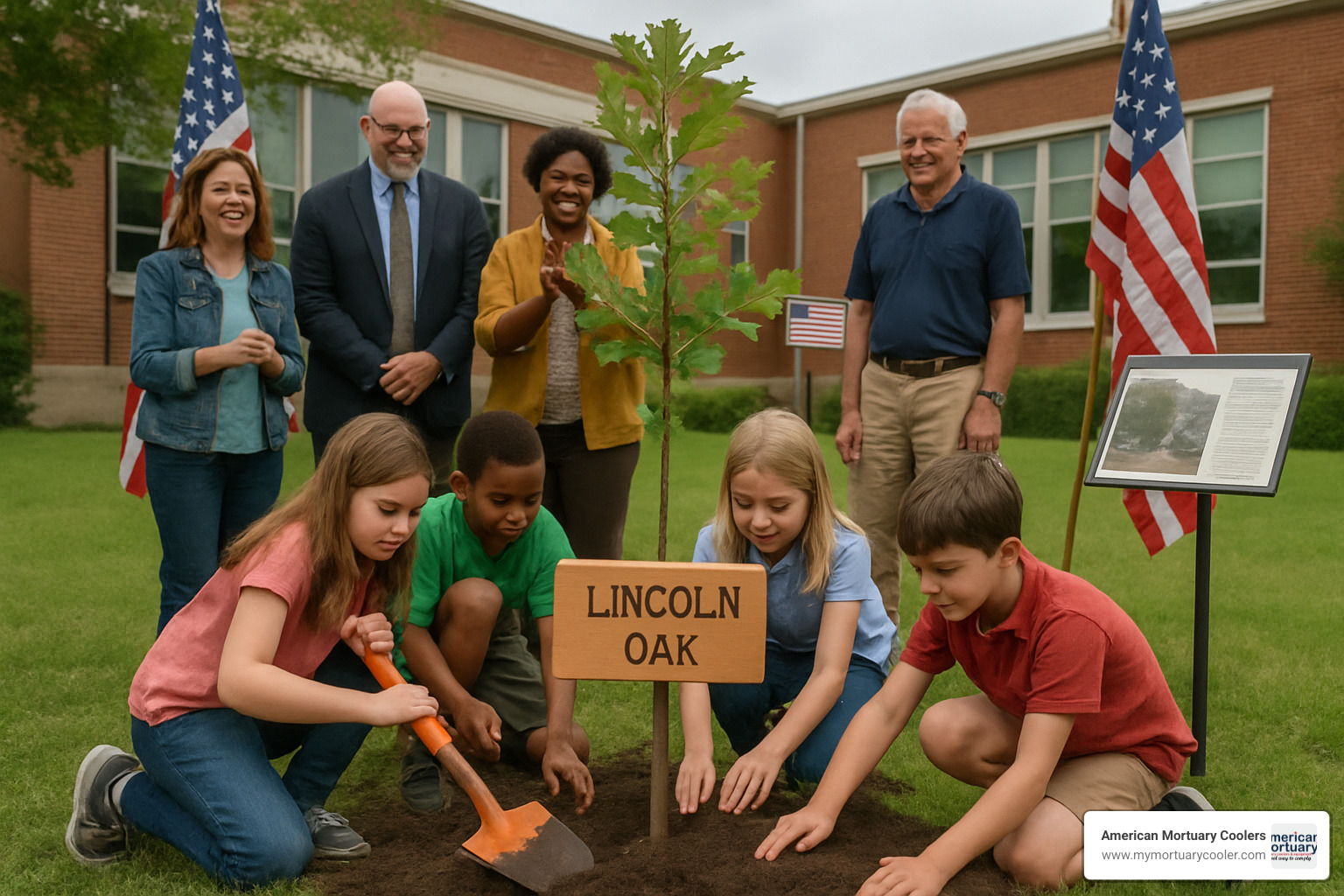
The community response to both Lincoln Oak sites tells us something important about American values. When the original trees died, people didn't just shrug and move on. They planted replacements, preserved artifacts, and found creative ways to keep the stories alive. From the 1914 plaque dedication to the 1980 replacement planting, each generation has found ways to pass these stories forward.
This kind of civic pride and environmental stewardship creates a ripple effect. Kids who participate in commemorative plantings grow up understanding that they're part of something bigger than themselves. They learn that taking care of special places is everyone's responsibility.
Why Trees Like the Lincoln Oak Matter
Heritage trees like the lincoln oak connect us to our past in ways that feel almost magical. You can read about Lincoln's speeches in a textbook, but standing where he actually stood under those branches? That hits different.
These living monuments teach us about patience and persistence. The Boundary Oak lived nearly 200 years, growing slowly and steadily through wars, political upheavals, and countless seasons. That kind of endurance reminds us that the most important things in life often take time to develop properly.
They also show us what community identity looks like in practice. When Bloomington residents decided to maintain that small memorial park, they were saying something about who they are as a people. When bourbon distillers honor the Boundary Oak's memory, they're connecting their craft to something meaningful and lasting.
Most importantly, these trees represent the democratic tradition at its most basic level - people gathering in public spaces to talk about what matters. No fancy buildings or formal ceremonies required. Just citizens, shade, and honest conversation about the future they wanted to build together.
"Drawing Inspiration from the Lincoln Oak Story"
The lincoln oak legacy offers lessons that reach far beyond historical preservation. The themes of resilience, growth, and providing shelter for important moments speak to anyone trying to do meaningful work in their community.
In our business at American Mortuary Coolers, we see connections between the oak's role and our own mission. Just as that tree provided a dignified setting for crucial conversations, we help funeral directors create appropriate environments for families during life's most significant transitions. Both require attention to detail, respect for the moment, and commitment to serving others when it matters most.
The Lincoln Oak story also reminds us that true craftsmanship - whether growing a mighty tree or building reliable mortuary equipment - requires thinking beyond immediate needs. The people who cared for these oaks understood they were creating something for future generations, not just solving today's problems.
For those interested in how natural processes can honor life's transitions, our guide on natural composting burial methods explores how we can integrate environmental stewardship into memorial practices.
The unity themes that emerge from the Lincoln Oak story feel especially relevant today. In an era of division, there's something hopeful about remembering a time when political opponents could speak under the same tree, addressing the same community, trusting that democracy would sort things out.
Frequently Asked Questions about Lincoln Oak
What happened to the original Lincoln Oak tree?
The original Lincoln oak in Bloomington, Illinois lived through some of America's most pivotal moments before finally succumbing to age in 1976. This remarkable tree had stood witness to far more than just those famous speeches by Lincoln and Douglas in the 1850s - it watched over the Civil War, saw the country rebuild during Reconstruction, and continued growing well into the modern era.
The community couldn't bear to lose this connection to history entirely. Four years later, in 1980, they planted a replacement oak in the exact same spot where the original had stood. It was their way of keeping the story alive for future generations.
The Boundary Oak in Kentucky faced similar challenges. Despite preservation efforts that began back in the 1920s, time eventually won out. The ancient tree's stump was reduced after 1976, and by 1986, the entire tree had to be removed. After nearly 200 years of standing guard at Lincoln's birthplace, this living piece of history was gone.
Are there memorials or replacements visitors can see today?
Absolutely! The Lincoln oak story continues in several places you can visit today. In Bloomington, Illinois, that replacement oak planted in 1980 is thriving in its small memorial park. The city has maintained the 32×32-foot parcel that was officially deeded for preservation back in 1966.
While the original commemorative plaque from 1914 now rests safely at the county historical society (where it's better protected from weather), the site itself still carries that sense of historical importance. Standing under the new tree's branches, you can almost imagine Lincoln and Douglas addressing those eager crowds more than 160 years ago.
Over in Kentucky, the Boundary Oak site has become part of the Abraham Lincoln Birthplace National Historical Park. Even though the original tree is gone, visitors can still learn about its incredible role as a boundary marker and its connection to Lincoln's earliest days. The park's interpretive materials help bring that history to life.
How is Lincoln Oak referenced in modern products like flooring and bourbon?
The lincoln oak name has become something special in quality products - it represents that perfect combination of American heritage and solid craftsmanship. In the flooring world, you'll find Lincoln Oak products that really deliver on both style and substance.
These flooring lines typically feature lifetime residential warranties because they're built to last. The manufacturers use traditional oak species but apply modern techniques like wire brushing and distressed textures to create that perfect balance of old-world character and contemporary durability. Many even carry FloorScore certification for indoor air quality, which matters more than people realize.
The bourbon industry has really acceptd the Boundary Oak connection. Distilleries create special releases that honor the tree's location at Lincoln's birthplace, usually featuring proof ranges of 105-120 and aging periods of 2-4 years. The tasting notes often highlight those classic bourbon characteristics - sweet corn, honeyed grains, and warm spices that remind you of American tradition.
You'll also find the Lincoln Oak name on luxury vinyl flooring, specialty millwork, and decorative elements used in everything from memorial settings to hospitality spaces. It's fascinating how a tree that once provided shade for political speeches now inspires products that bring quality and heritage into people's homes and workplaces.
Conclusion
The lincoln oak story - stretching from that political gathering place in Bloomington, Illinois to the boundary marker at Lincoln's Kentucky birthplace - shows us how a simple tree can grow into something much more meaningful. These weren't just plants taking up space. They were living witnesses to moments that shaped America.
What strikes me most about these trees is how they kept serving their communities long after the original wood was gone. The Illinois oak died in 1976, but folks didn't just shrug and move on. They planted a replacement in 1980. They preserved a leaf in a university collection. They kept the story alive.
The Kentucky Boundary Oak took a different path. When it finally came down in 1986 after nearly 200 years, its legacy found new life in bourbon bottles and hardwood floors. Today, you can literally walk on Lincoln Oak flooring or raise a toast with spirits that honor that old tree's memory.
Heritage preservation works in ways we don't always expect. Sometimes it's about maintaining the exact spot where history happened. Other times it's about carrying forward the values and craftsmanship that made those moments special in the first place.
This connects deeply with our work at American Mortuary Coolers. Just like those oak trees provided dignified settings for life's important moments - whether political speeches or quiet reflection - we create equipment that helps funeral directors serve families during their most significant times.
Our custom mortuary coolers are built to last, just like those mighty oaks were meant to endure. We serve funeral homes across all 48 contiguous states because we believe every community deserves access to quality craftsmanship that honors both memory and service.
The lincoln oak legacy teaches us that true preservation isn't just about keeping old things around. It's about understanding what made them valuable and finding ways to keep that value alive for future generations. Whether through careful historical documentation, thoughtful commercial tributes, or simply planting new trees, we keep these stories growing.
For more information about how American Mortuary Coolers continues this tradition of lasting quality and dedicated service, visit More info about American Mortuary Coolers.
















